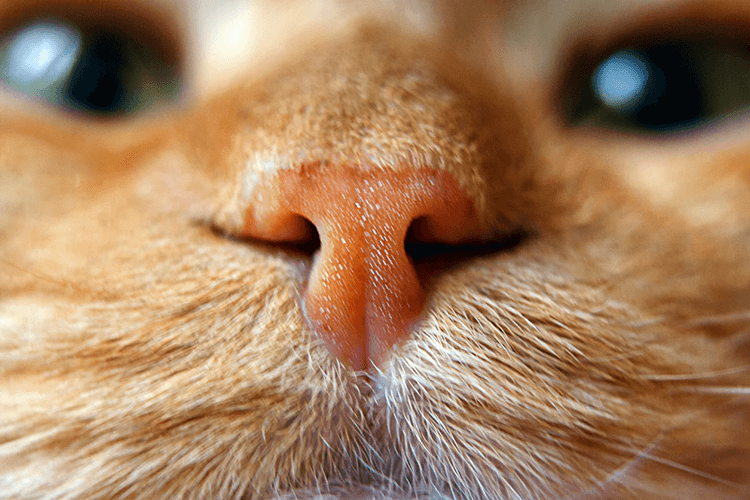If you haven’t yet taken the opportunity to get to know your cat’s nose, there’s no better time than now. Maybe you’ve become acquainted with it but haven’t really thought about it. Or maybe you are well accustomed to paying your kitty’s nose regular visits and have noticed that it can be quite different each time. Whatever your level of association is with your feline friend’s sniffer, this article will help you better understand your cat’s nose and as a result your cat.
The Mostly Normal
Your kitty’s nose goes through a number of changes throughout the day. It can be wet, dry, cold or warm. Most of the time these changes are due to the environment and mean nothing, but sometimes a change can be significant and a warning sign about your cat’s health. If you want to know what a cat nose should feel like normally, I guess you could say cool and moist. However, if kitty is soaking up a sunbeam or blocking the fan on the heater, her nose can easily change to dry and warm. Whereas if she’s outside on a brisk fall morning, her nose might be cool and dry. You can see where I’m going with this. The environment has a lot of impact on how your cat’s nose is feeling.
The Down Low on Dry
For those of you worrywart pet parents out there, you may have heard that a dry and warm nose means something is wrong, that your kitty is sick. This is mostly false, but it can be true. Sorry for the confusion, but if the only symptom your kitty is showing is a dry and warm nose chances are the change is due to the environment. If, however, his nose is dry and warm and he didn’t eat his breakfast that morning, then you can hypothesize that something may be up. Always look for other symptoms of illness such as decreased appetite, lethargy, or changes in behavior before you attribute a change in the feeling of your cat’s nose to illness.
Worried About Wet?
What about a nose that is too moist? By this I mean snotty. Kitties that are experiencing an upper respiratory infection, something that’s pretty common, may have clear or yellowish discharge from their nose. Sometimes you may notice black crusts surrounding the openings. Usually upper respiratory infections are accompanied by sneezing, coughing, and possibly weepy eyes as well. Sometimes you might only notice your cat incessantly licking her nose to clear the discharge. In any case, upper respiratory infections often need a veterinarian’s attention, and they are extremely contagious if you have other kitties in your crew.
Still More Variations
On the other extreme, a dry and very warm nose could be indicative of a fever. Again, this will not be the only symptom your cat shows if he’s spiking a temperature worthy of a noticeably hot nose. He will probably also be lethargic and not wanting to eat. This is definitely a reason to see your veterinarian.
Finally, a change in your cat’s nose that would be cause for concern is if it becomes extremely dry and flaky or cracked. There are several infectious, cancerous and even autoimmune diseases that can cause a dry, flaky, cracked, or ulcerated nose. If your kitty shows up with any of these changes, you should definitely see your veterinarian.
So, if you’re interested, I challenge you to keep tabs on your feline friend’s nose for a day and just see how many changes it goes through. This will give you some insight as to the changes it might experience because of an illness. And if nothing else, it sure could be a fun bonding exercise and some quality time spent for the both of you.






